Iranians still waiting for change after sanctions were lifted
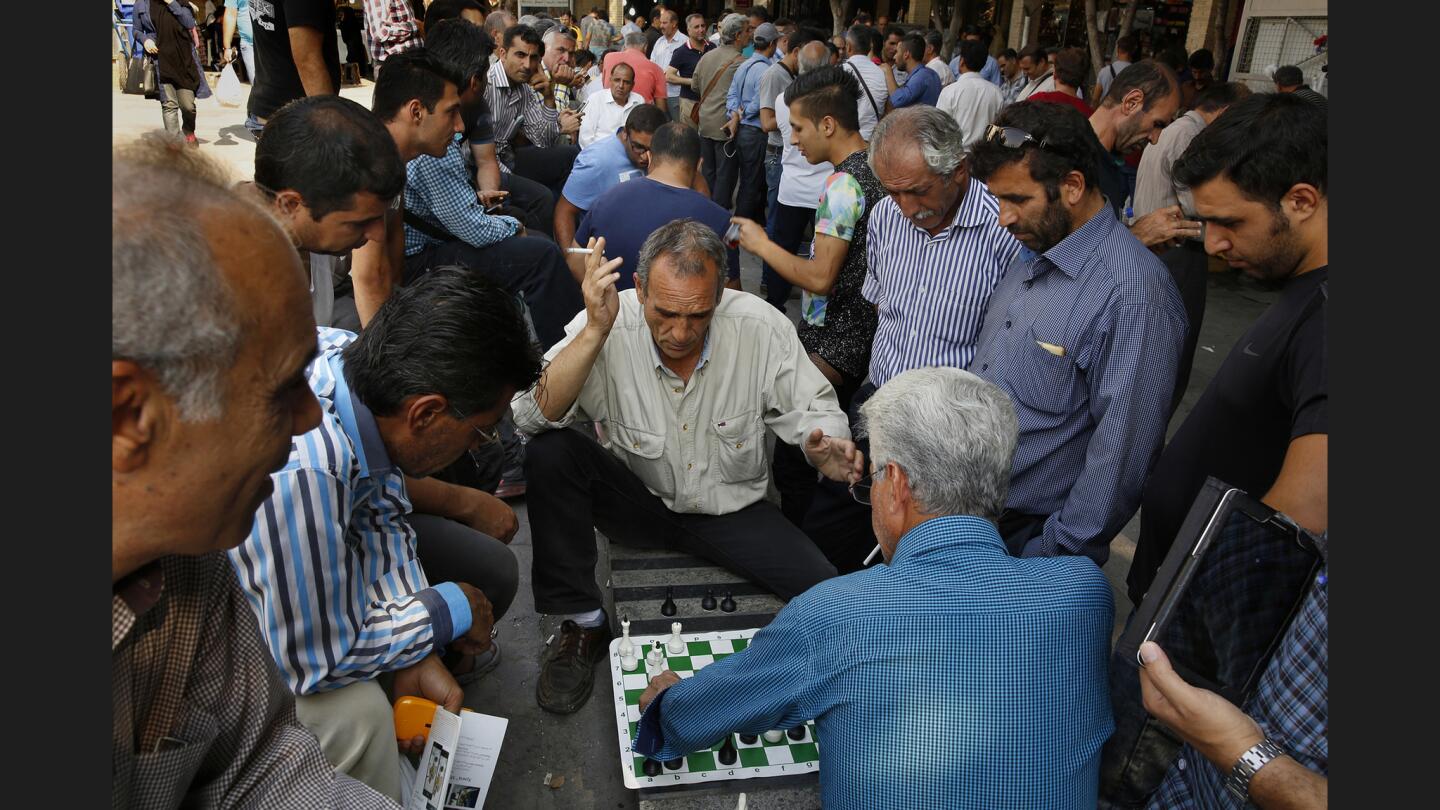
Men gather at Tehran’s Grand Bazaar to play chess. The unemployment rate is at 11%, and it’s even higher for the educated class. Despite the lifting of U.S. sanctions on Iran, many Iranians are frustrated that they haven’t seen any economic change over the last year.
(Carolyn Cole / Los Angeles Times)Eight months after international sanctions were lifted in exchange for curbs on its nuclear program, Iran’s long-suffering people are still waiting for change.
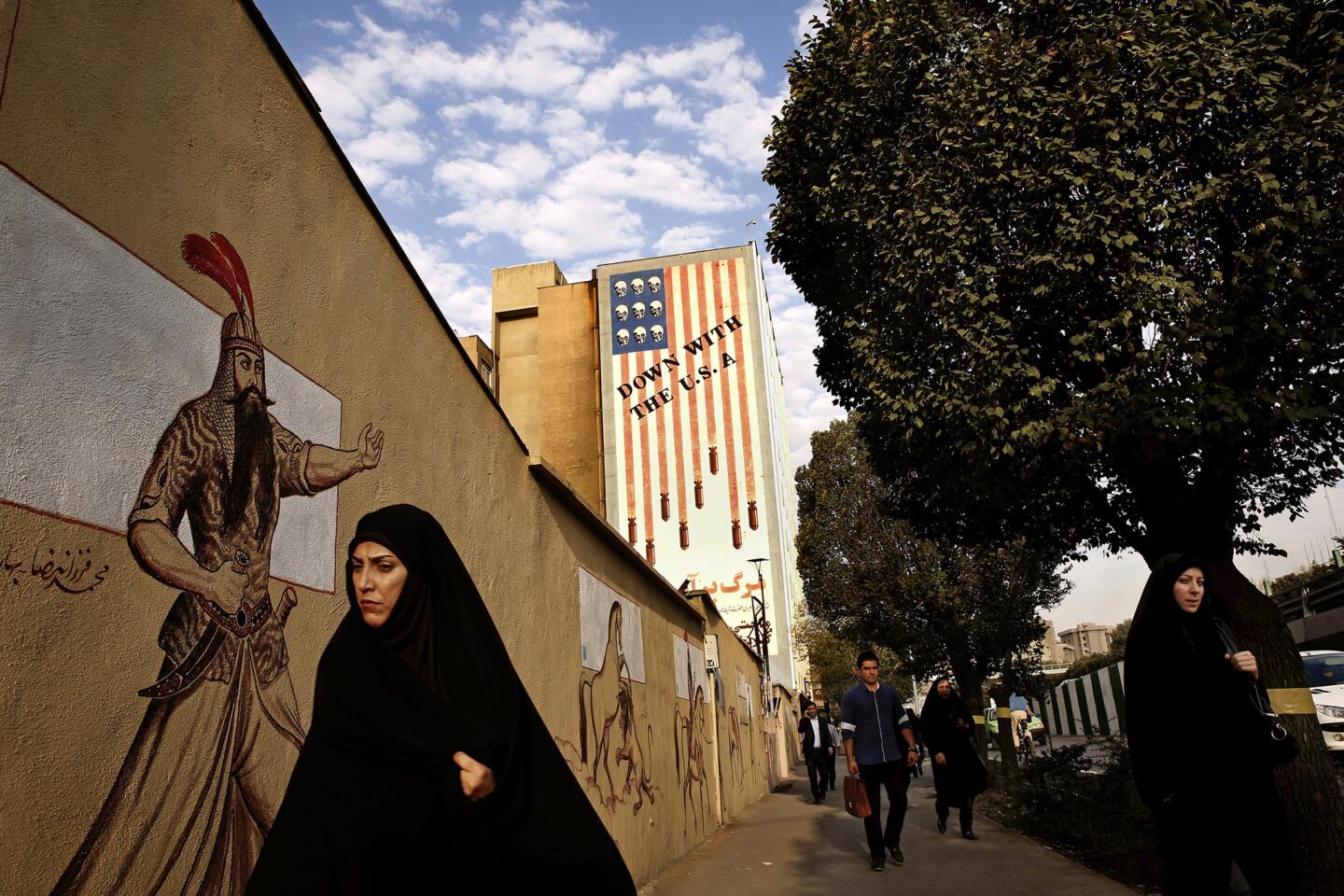
An anti-U.S. mural looms large on a boulevard in central Tehran. It has been there for over 30 years and is occasionally touched up.
(Carolyn Cole / Los Angeles Times)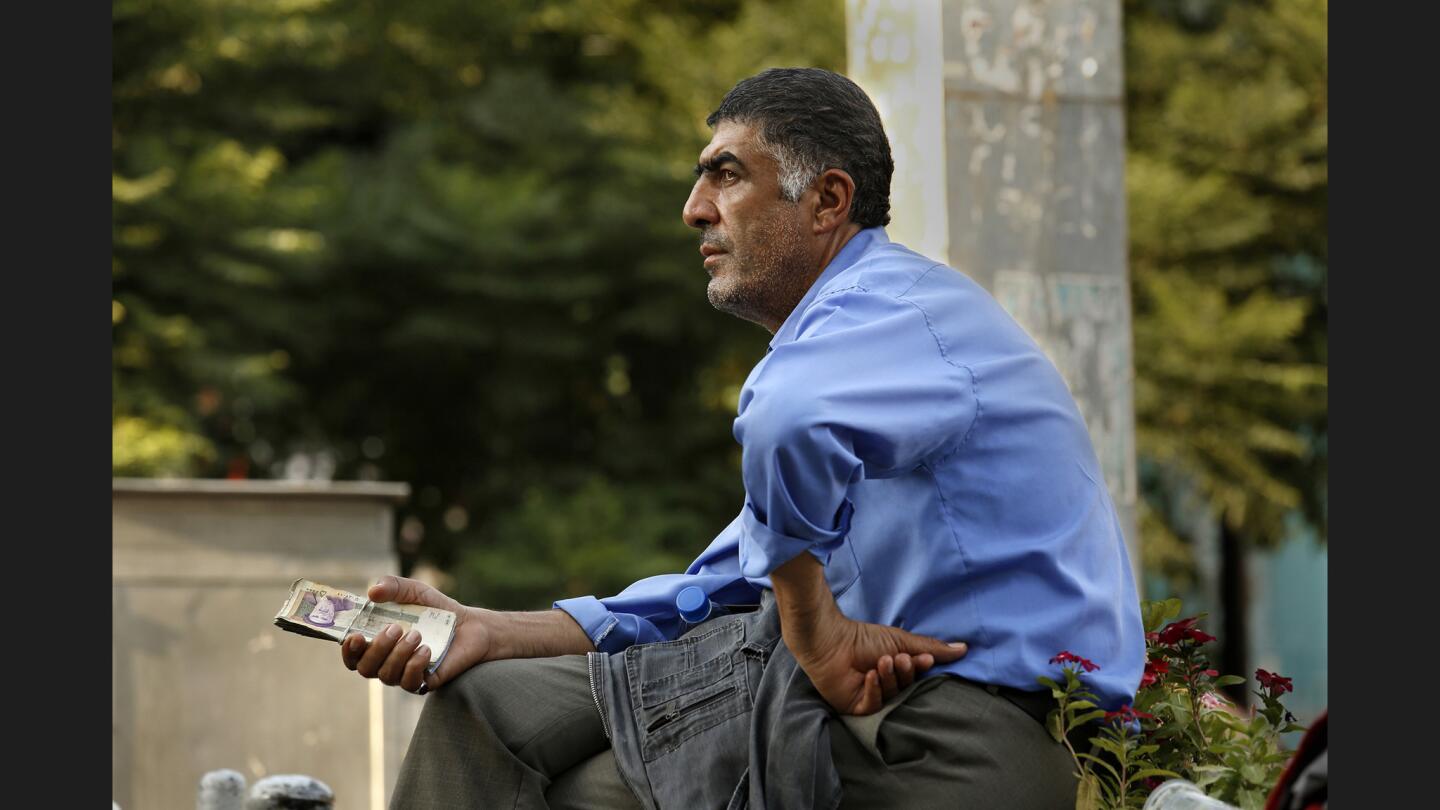
A man tries to make a living exchanging currency outside the Grand Bazaar.
(Carolyn Cole / Los Angeles Times)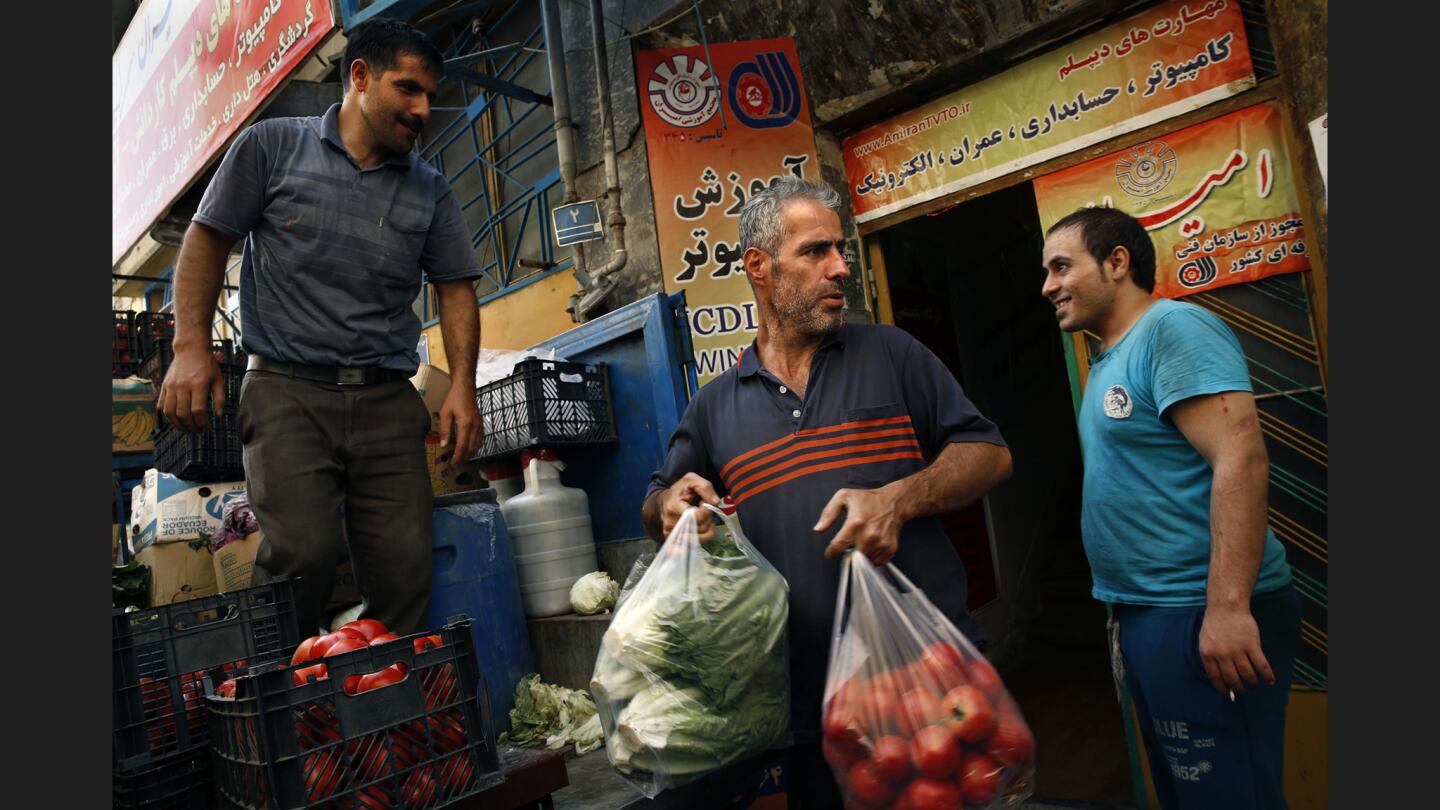
Hossain Hassanzadeh, 37, left, sells vegetables to restaurants with the help of Jalal Alipour, center, who delivers them in central Tehran. Hassanzadeh said that over the last five years, cabbage and tomato prices have doubled and that more people are opting for cheap fast food, like falafel.
(Carolyn Cole / Los Angeles Times)Advertisement
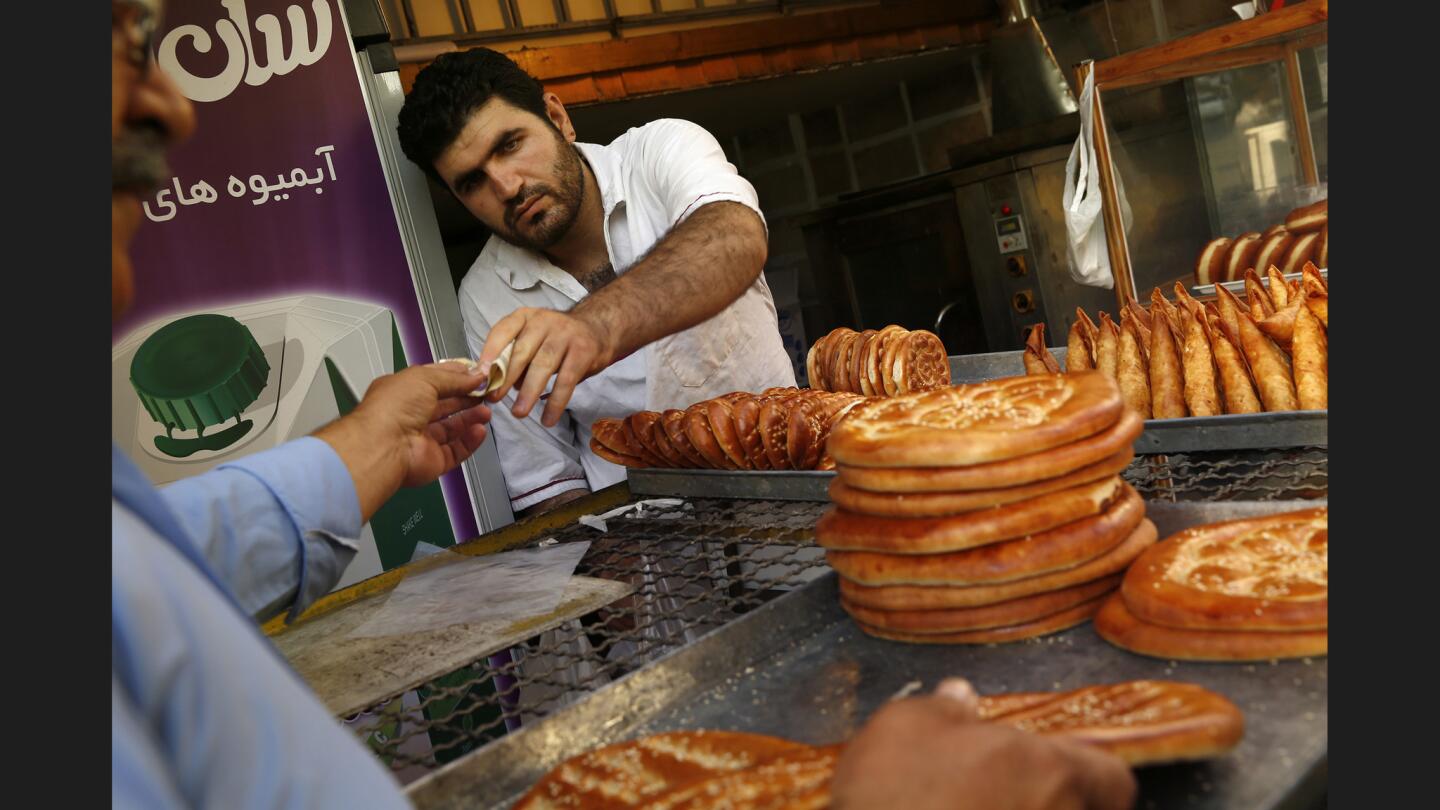
A baker sells bread in downtown Tehran. Self-sufficiency in wheat has been one of the major goals of Iranian agricultural policies since the 1979 revolution.
(Carolyn Cole / Los Angeles Times)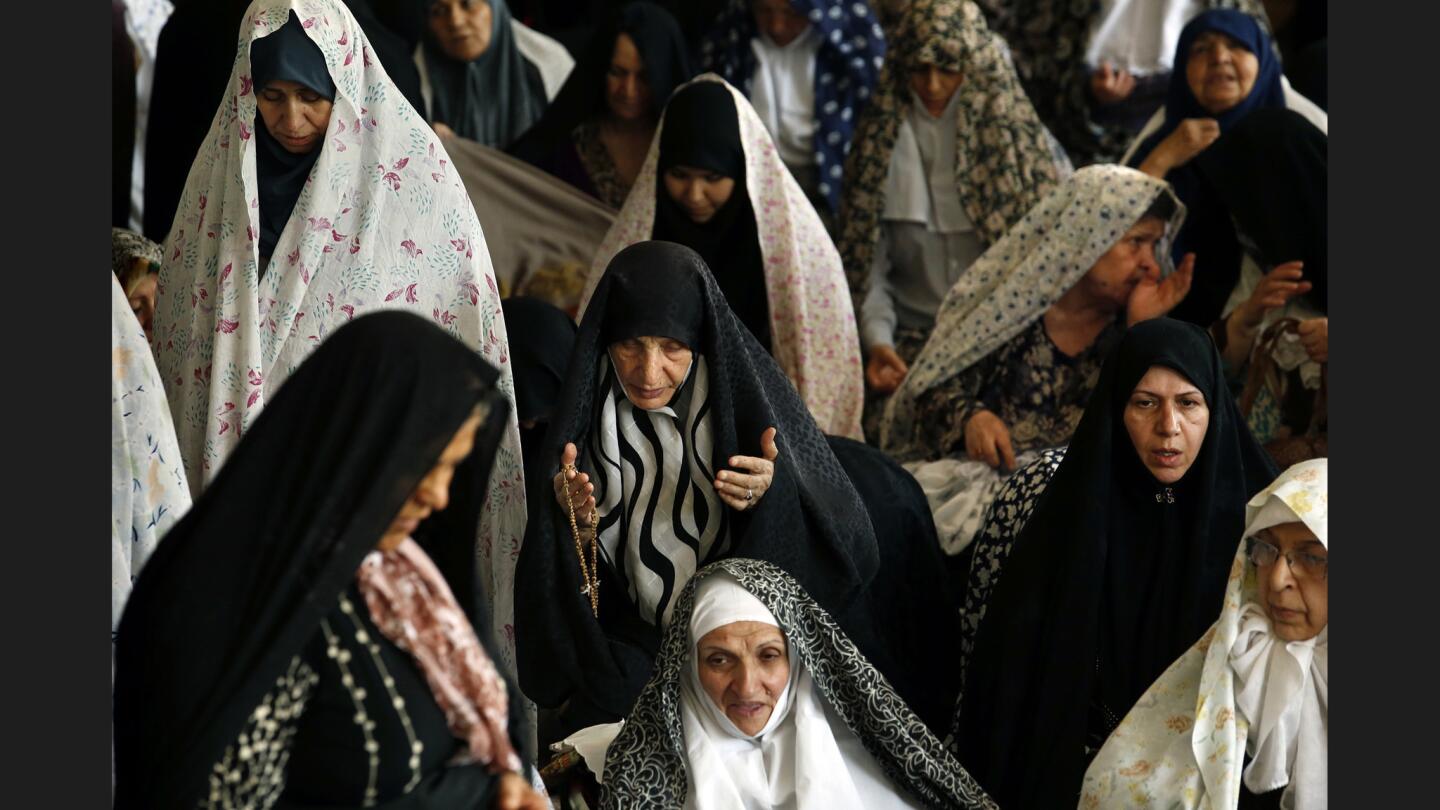
“Death to America” chants are still de rigueur at weekly prayers in Tehran. But after a recent Friday sermon, worshipers streaming out of the Mosalla Mosque signaled growing frustration at corruption among Iran’s political elite.
(Carolyn Cole / Los Angeles Times)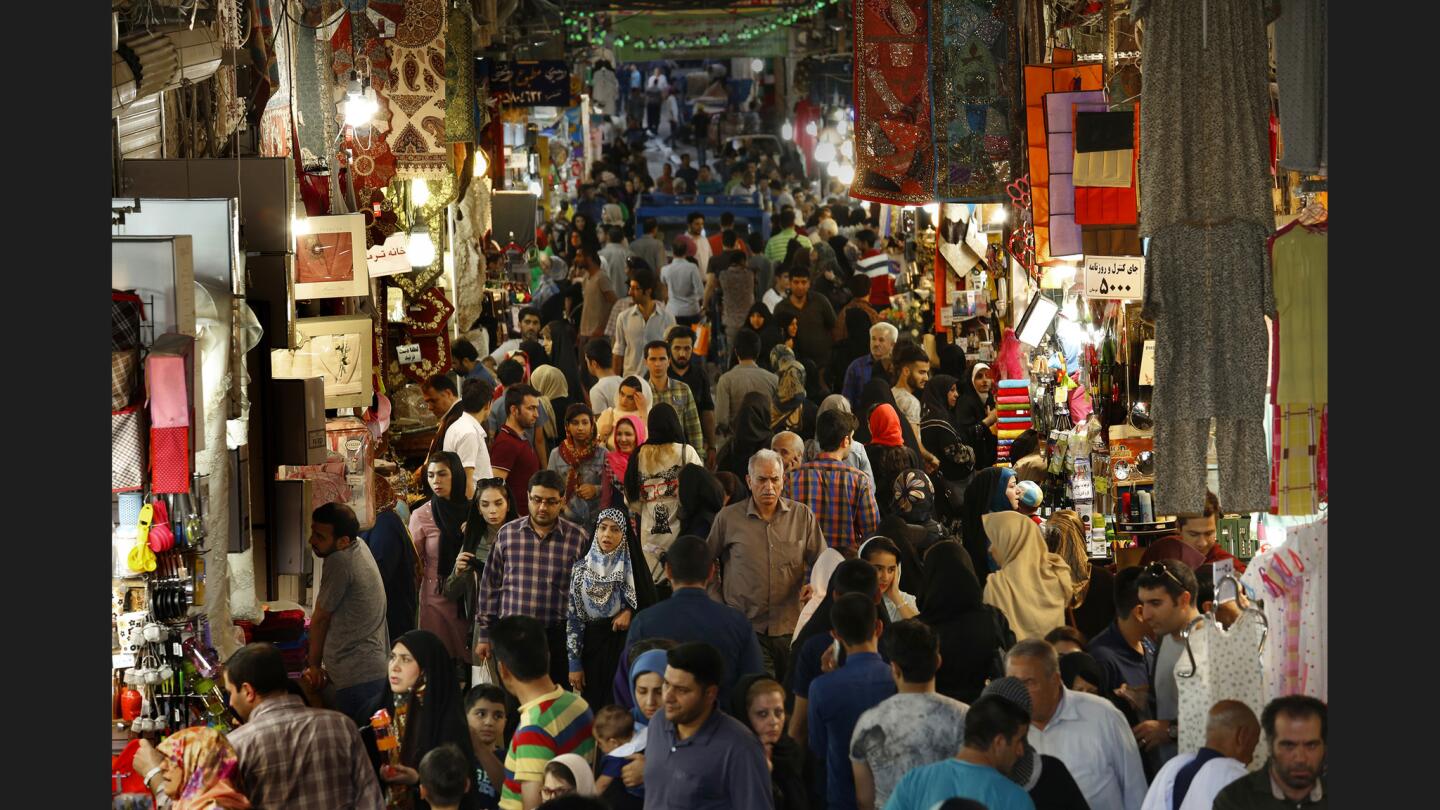
The Grand Bazaar is packed with shoppers.
(Carolyn Cole / Los Angeles Times)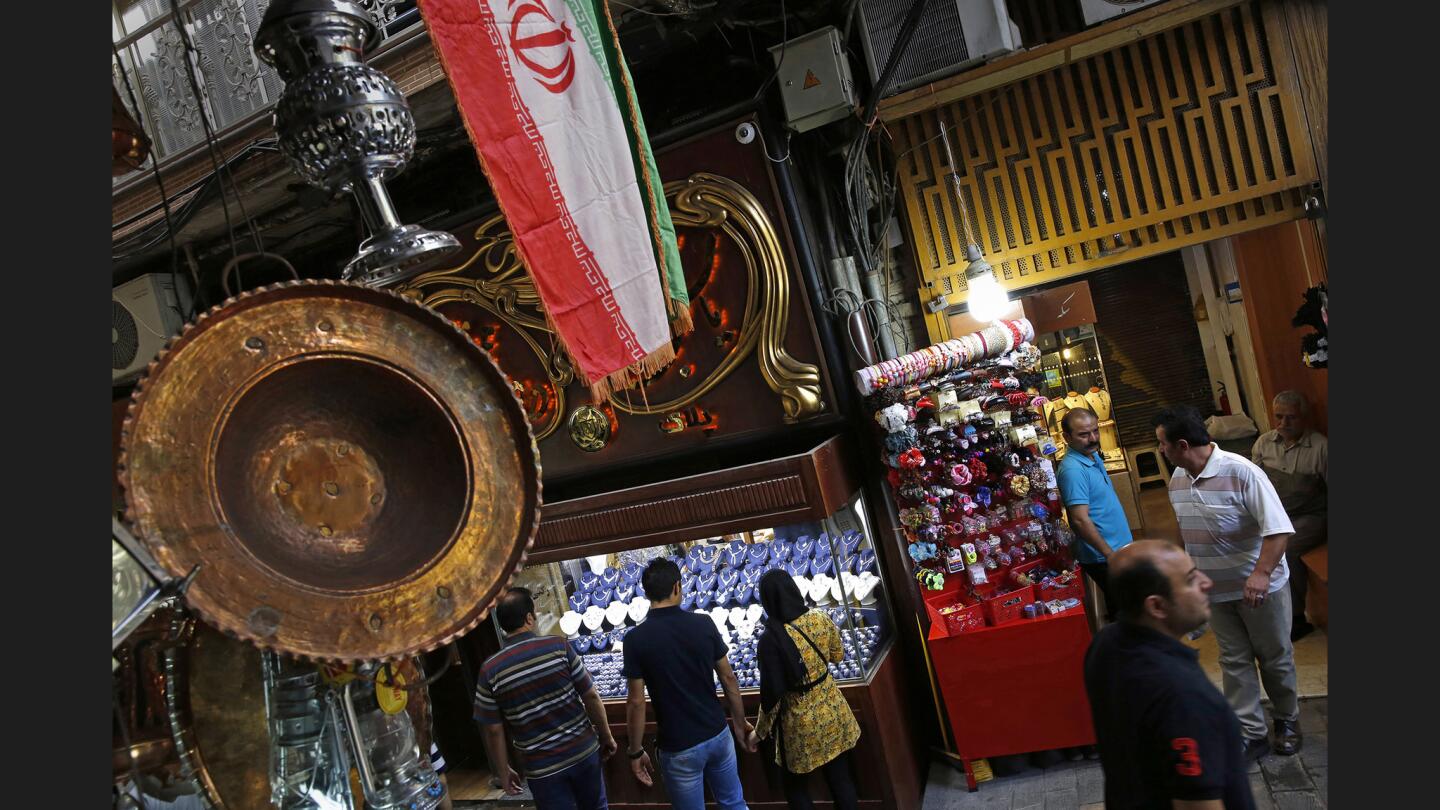
A couple look at jewelry in the gold market at the Gran Bazaar.
(Carolyn Cole / Los Angeles Times)Advertisement
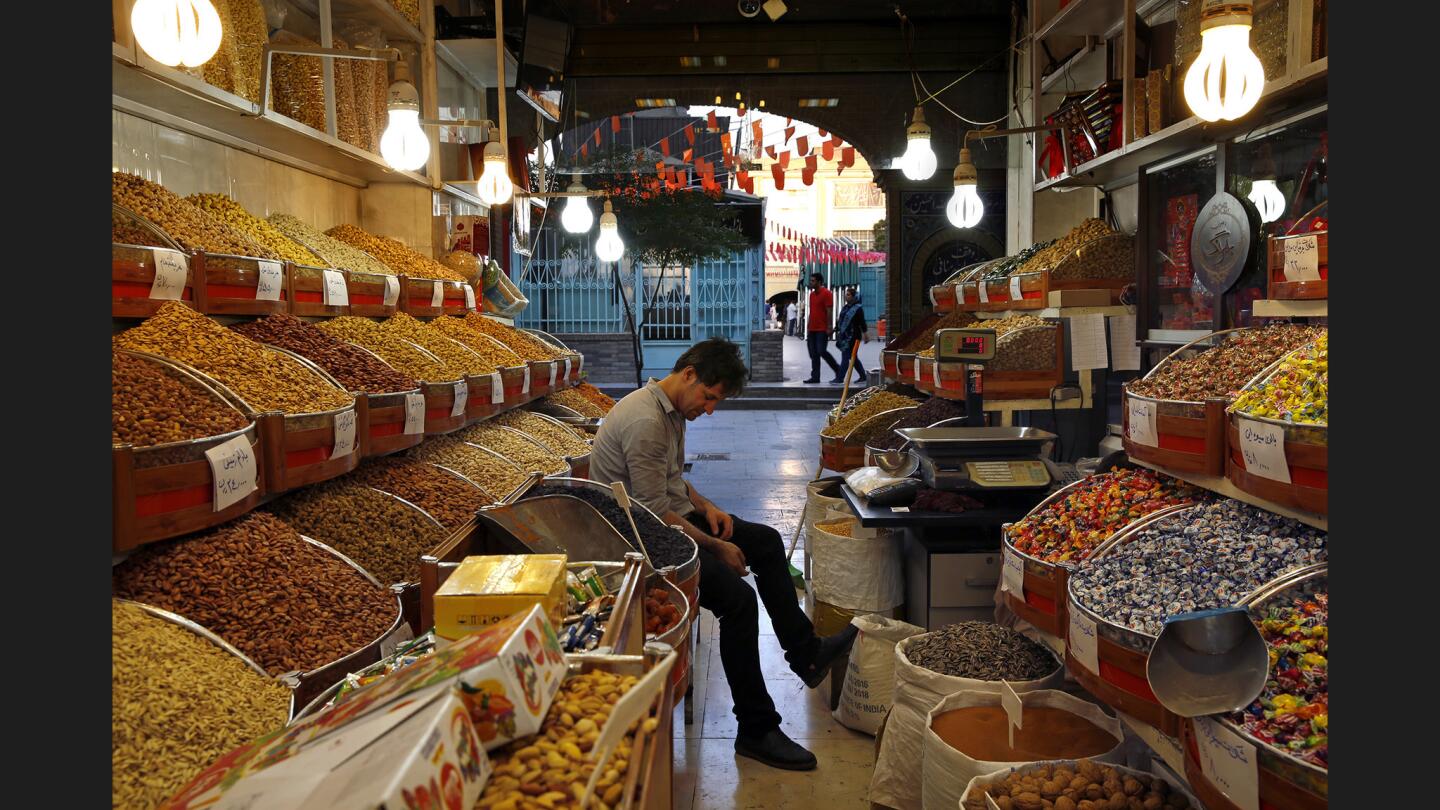
“The government was not ill-intentioned,” said Ali Rezaei, 36, co-owner of a dried-fruit shop at the Grand Bazaar. “They wanted to give hope to the people after so many years. That’s why people’s expectations were so high, and why they haven’t been met.”
(Carolyn Cole / Los Angeles Times)


